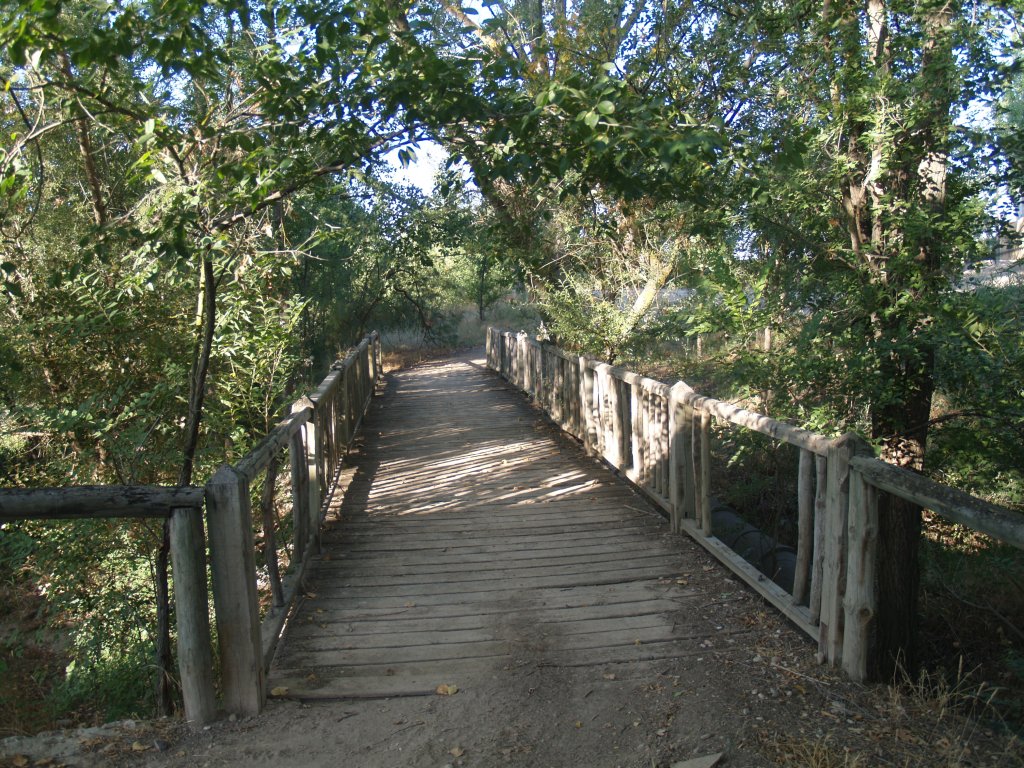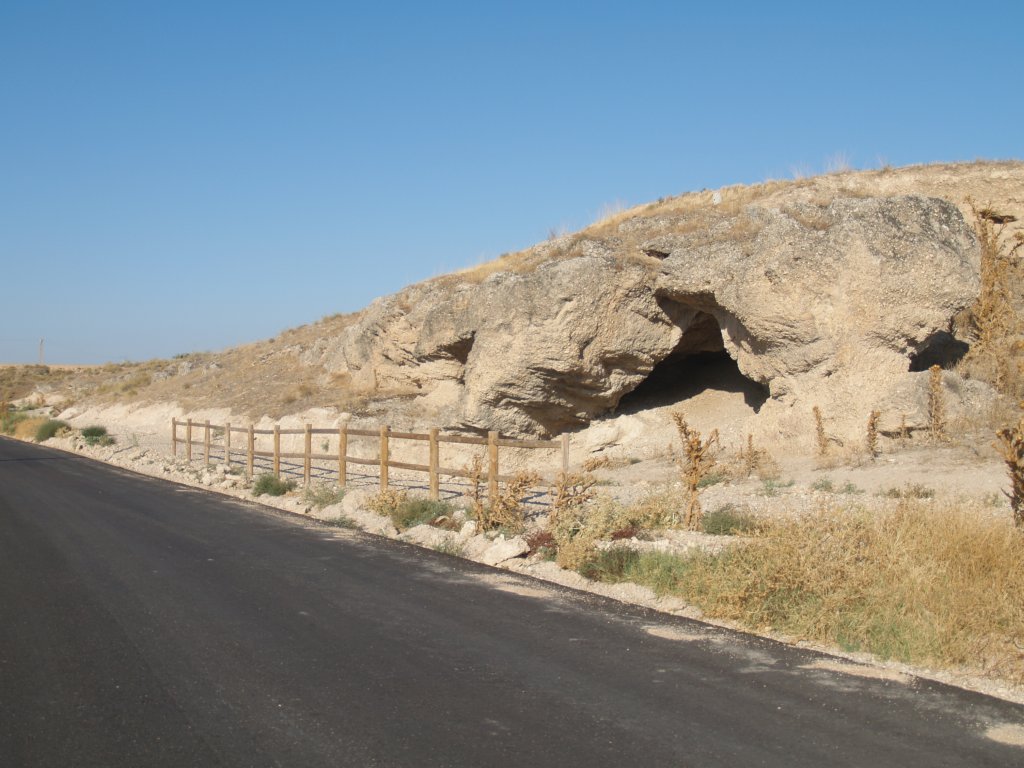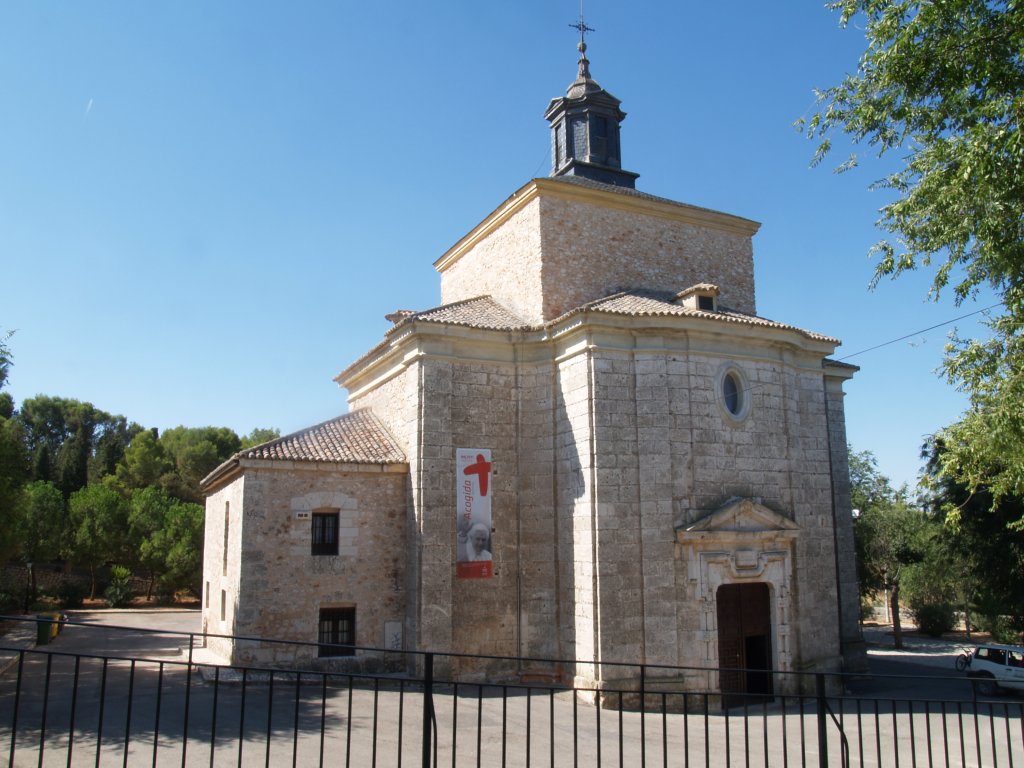Stage 18: Villamanrique de Tajo - Colmenar de Oreja
Description

Through valleys and quarries
This Stage of the Nature Trail offers a different landscape from the meadows of the earlier Stages. Here, ancient remains of abandoned quarries alternate with modern mining operations. Open pit mining activities can be seen until Colmenar and, from there onwards, the route traverses the beautiful Valdegrederos Valley.
This Stage, which begins in Villamanrique de Tajo, takes the path closest to the river, which skirts around the southern edge of the town. From the beginning, the Nature Trail shares the route with another path, the "Ecological Path of Ribera del Tajo”.
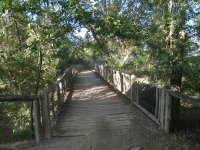
The route crosses a wooden bridge, the last shade in several kilometres; therefore, it is advisable to stock up on water.
After crossing the M-325, the Trail continues along a cattle track that runs between large cornfields. This stretch of the route is very quiet as vehicle access is restricted. To the right, the Trail is bound by hills, where erosion over the centuries has carved whimsical shapes that provide shelter from sun or rain.
The Trail is flanked by farmland and pastures, which bring a mix of green and yellow, according to the season, and where herds graze and rest. The first quarries appear further on. These modern, small-scale quarries are in sharp contrast with the remains of the old mines.
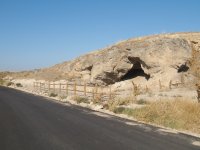
Close to the quarries, the route moves away from the track and continues along paved roads. Soon after, one can see the refinery and heavy machinery of the quarries. From here, the Trail ventures through narrow paths that run parallel to the access road for lorries, avoiding the dust and noise made by these vehicles.
After a couple of kilometres, the route reaches a crossroads leading to the town of Colmenar de Oreja (right) and the road to Aranjuez (left). From here, Stages 18 and 19 overlap until Colmenar.
The Trail continues north to the right. As the route advances towards the top of the plateau, one can sense that the end is near. From the very beginning, the landscape of the climb up to Colmenar de Oreja is dominated by sunflowers, olive trees, corn and even vineyards. The track winds through reeds, which is proof that the land is waterlogged and muddy.
Pine trees appear soon after, while the valley narrows as it advances towards Valdegrederos. The ascent gradually becomes steeper, confined in the depths of this beautiful valley. The track climbs higher and higher with every bend.
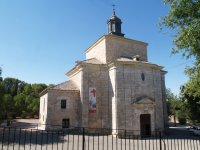
During the fieldwork to describe the route, it was found that several Stages were difficult to pass owing to the poor condition of the road surface (gullies formed by concentrated runoff).
Although far from being impassable on bicycles, it is a challenging ride that is only fit for experienced bikers. Further on, after the Vadegrederos Stage, there is a well-equipped rest area in the upper levels of this site, where one can rest in the shade.
The route continues along the opposite side of the road, with Colmenar de Oreja on the horizon. The route enters this beautiful town from the south. Colmenar de Oreja boasts multiple fountains and an amazing panoramic view over the River Tagus lowlands that is well worth the effort made during the ascent. The shrine of the Santísimo Cristo del Humilladero, which proudly stands at the entrance to Colmenar, is the crown of this Stage.
Sites of interest
Profile
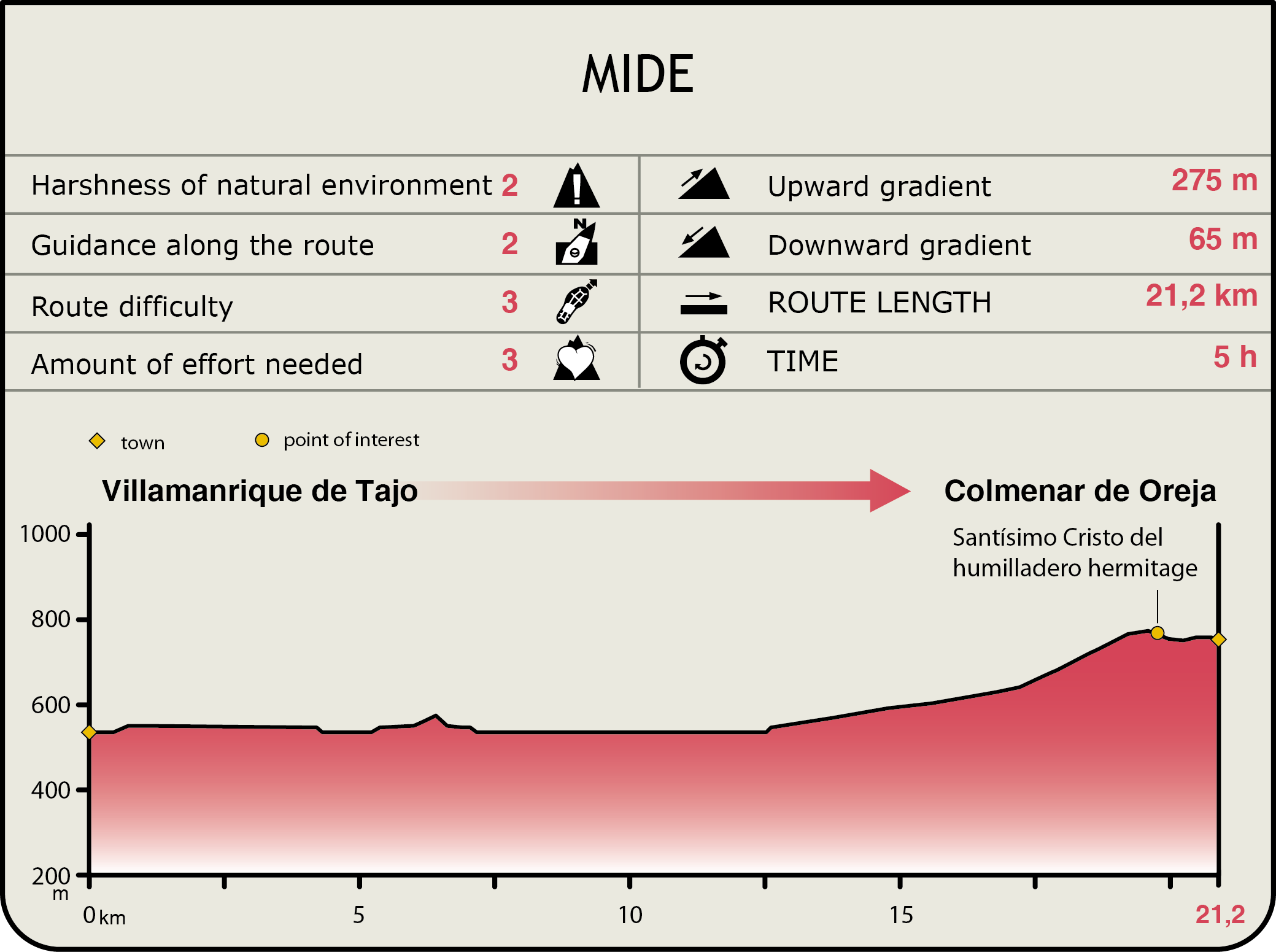
MIDE (Method for the Information of Excursions)
Featured
Further information
Shrine and Gardens of Cristo del Humilladero
It consists of two chapels, one from the 16th century, and the other from the 17th in Baroque style, with stone masonry walls.
It holds within the image of the patron of the city: Cristo del Humilladero. A pleasant walk from the Plaza Mayor takes the traveller to the gardens and pine forest near the shrine. Every year, during the first week of May, a procession takes place at night on the feast day of the patron. The endless rows of long candles, which seem to move on their own, produce an almost ghostly vision.
The gardens of the shrine of the Cristo del Humilladero offer an impressive and sweeping view of the town, with the silhouette of Oreja Castle and Montes de Toledo in the distance.
